Olympus FE-5050 Review
Olympus FE-5050
The latest budget ultra-compact from Olympus has 5x wide-angle zoom and a 14MP sensor.
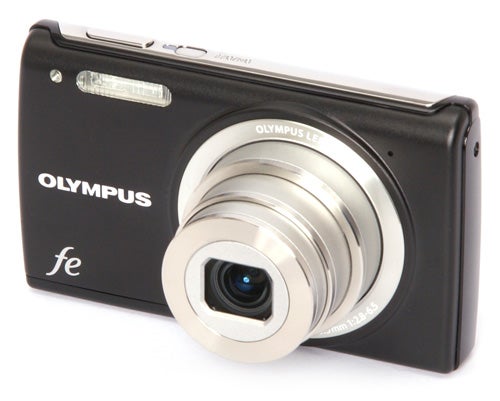
Verdict
Key Specifications
- Review Price: £129.99
Olympus is one of the original “Big Five” camera companies, with a history dating back to 1919. Over the years it has produced many classic cameras, such as the Trip 35mm compact and the extremely popular OM series of 35mm SLRs. It was also one of the first to get into digital cameras, launching its first model in 1996, and was the first to abandon film camera production in favour of digital. True to form it has produced many highly-regarded digital cameras, such as the superb C series, the mju-Tough series of waterproof compacts, the SP series of ultra-zoom cameras, the E-system Four Thirds digital SLRs, and more recently the Pen E series of compact system cameras. However it also makes a range of budget compacts, the FE series, which have won rather fewer accolades. Some have been merely adequate, while others have been among the worst cameras I’ve ever seen. Today I’m taking a look at the latest in the line, the new FE-5050, so will it be a good one or a bad one?
On first appearance alone the FE-5050 certainly looks like a good one. The basic specification is an upgrade from the previous FE-5020. It has an f/2.8 – f/6.5 5x zoom lens equivalent to 26 – 130mm, a 14-megapixel CCD sensor and the same 6.9cm (2.7in) 230k LCD monitor. Thankfully Olympus has ditched the ghastly candy-wrapper plastic shell of the FE-4000 and FE-5020 in favour of a slim and attractive metal body, available in sliver, champagne, pink or the matt black seen here. It’s a massive improvement, and immediately makes the camera look and feel ten times classier than its predecessor.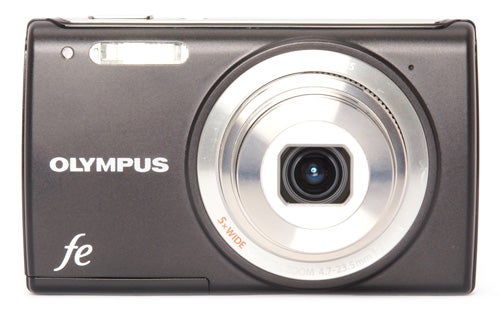
The FE-5050 is a very small camera, certainly qualifying for the title “ultra-compact”. It’s roughly the same size and weight as my current favourite ultra-compact the Casio EX-S12, measuring 92 x 55 x 18.8mm and weighing 114g including battery and memory card. The overall build quality is very good, with tight panel seams and a metal hinge on the battery/card hatch, although the tripod bush is made of plastic. The body shell is aluminium front and back, with plastic panels on the sides and a strip of chrome plastic trim on the top.
The FE-5050’s main controls are mostly the same as previous FE models, with a rocker-switch zoom control and a square D-pad, although they are at least made of chrome-finished plastic rather than the awful see-through plastic of the FE-5020. The buttons are labelled with etched lettering, but it’s easier to read than is usually the case. The controls are well mounted, easy to access and operate with a nice positive action.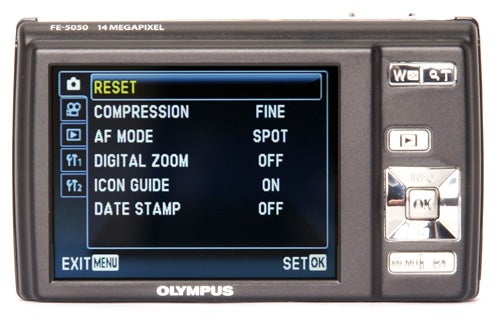
In terms of features it’ll come as little surprise that the FE-5050 isn’t all that different from the FE-5020. It’s a basic point-and-shoot camera designed for easy use, and has only the most basic range of options. Shooting modes consist of program auto, a scene mode with 13 scene programs, an automatic scene recognition mode and the “Magic” filter mode, which offers a limited range of creative filter effects. There is no continuous shooting mode, no exposure metering options and no tone adjustment, but at least it does allow manual selection of ISO setting and white balance, something that was lacking on some previous FE models.
Over the years I’ve repeatedly criticised Olympus’ menu system, which has always previously been ugly, awkward and slow to use. However the FE-5050 has a completely new menu system, and to my considerable surprise it is absolutely brilliant, although this is largely because it’s copied almost entirely from Casio. It has a permanent on-screen sidebar menu controlling most common shooting functions such as flash mode, macro focusing, self timer, exposure compensation, white balance and ISO. As with Casio’s system this is activated and navigated by the D-pad. As well as this there is a main menu, which thankfully does away with the pointless graphic front page in favour of a conventional tabbed multi-page menu system. There aren’t a lot of options on it in this case, but it’s still a massive improvement.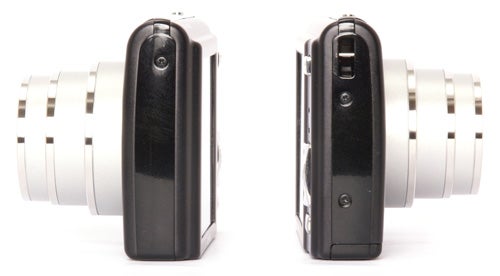
The video recording mode is very basic by current standards, offering only VGA (640 x 480) resolution at 30 frame a second with mono audio, and no optical zoom when shooting. The video and audio quality are pretty grim, not much better than you’d expect from a cell phone, and the microphone is very prone to wind noise.
Olympus has now completely abandoned the expensive and unpopular xD-Picture memory card format, and the FE-5050 accepts SD and SDHC cards, although it doesn’t appear to be compatible with the newer SDXC high-capacity format. This isn’t a major problem however, since those cards are mainly intended for use with HD video recording.
For a budget compact the FE-5050 does have pretty good overall performance. It starts up and is ready to shoot in a little over two and a half seconds, which is a little slower than the FE-5020, and has a shot-to-shot time of approximately three seconds, which is a bit faster. As I mentioned, the FE-5050 has no continuous shooting mode.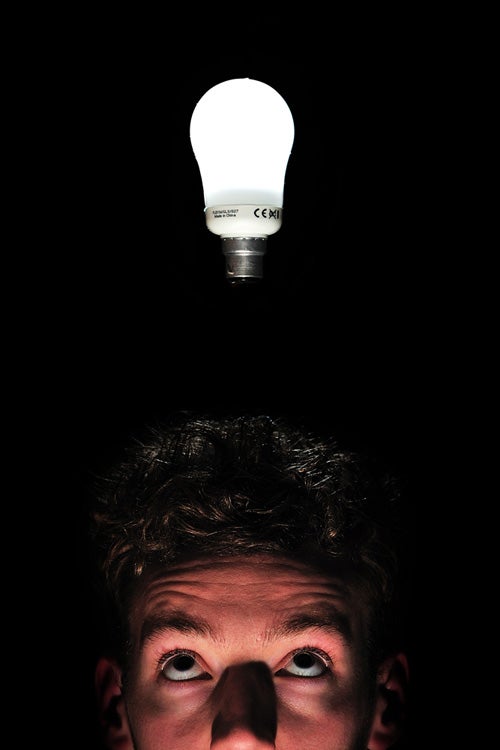
The autofocus system seems to have benefited from the upgrade, and is fast and reliable in most lighting conditions. Its low-light performance also seems to have been improved, and it will focus reliably in dim lighting, although without an AF assist lamp it can’t focus in darkness. The exposure metering system is also better than on previous FE models, producing accurate exposures even in strong backlighting.
The new lens is also much better than on previous models. Centre sharpness is excellent, and corner sharpness is also very good, with much less chromatic aberration. The overall level of detail is excellent, especially considering the camera’s relatively low price, and the low compression helps to preserve it, with file sizes of around 6MB.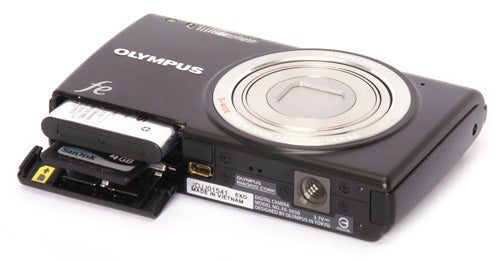
The FE-5050 has a tiny 1/2.3-in 14MP sensor, and as a result dynamic range is severely limited with little shadow detail in high contrast situations, and image noise is also a problem. Image quality at the minimum 64 ISO setting is very good, but noise begins to appear at 200 ISO, and 400 ISO shows some reduction in detail and colour saturation. 800 ISO is worse still, and as usual the maximum 1600 ISO is very poor.
”’Verdict”’
The Olympus FE-5050 is a refreshing change for what was previously a rather disappointing line of cameras. It is very compact, well made, and the vastly improved interface is very easy to use. It’s a bit light on features, but overall performance is adequate and the results are above average for the price bracket.
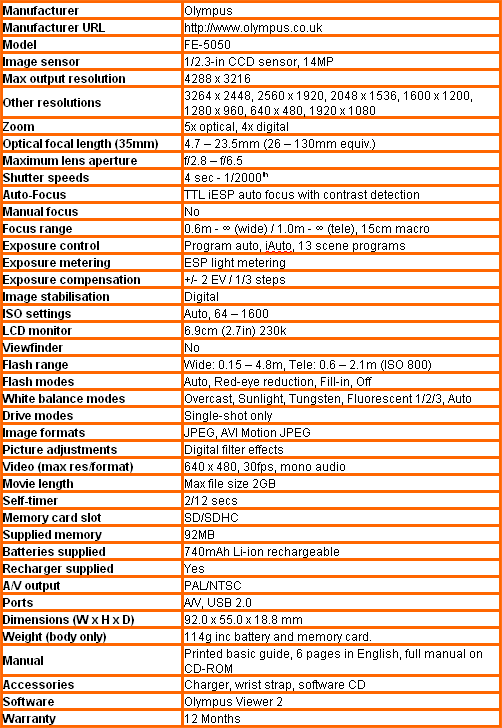
”Over the next few pages we show a range of test shots. On this page the full size image at the minimum and maximum ISO settings have been reduced to let you see the full image, and a series of full resolution crops have taken from original images at a range of ISO settings to show the overall image quality. These pictures were taken indoors using reflected natural light. ”
—-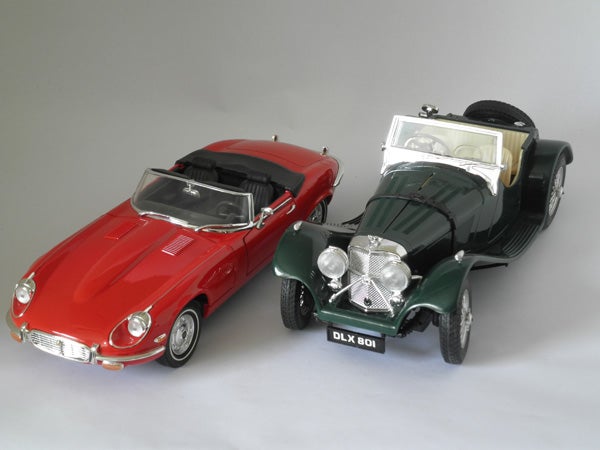
This is the full frame at minimum ISO.
—-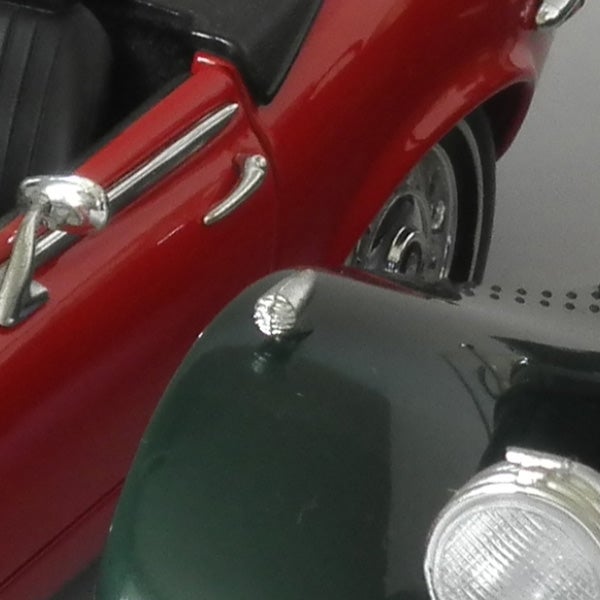
At the minimum 64 ISO the image quality is excellent.
—-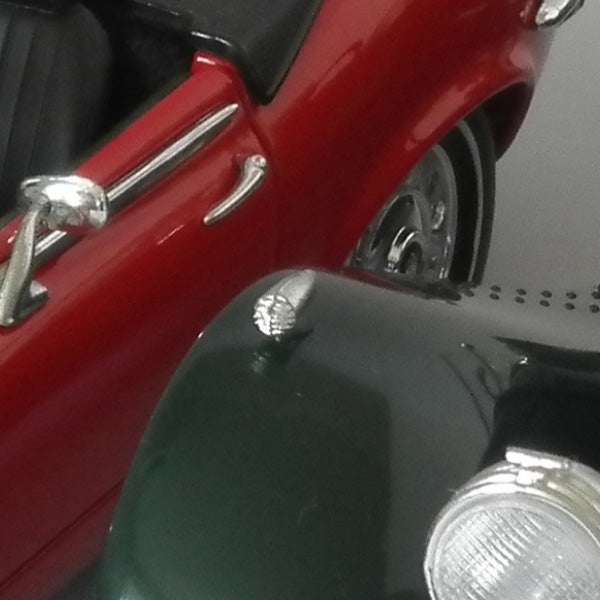
Image quality is still good at 100 ISO.
—-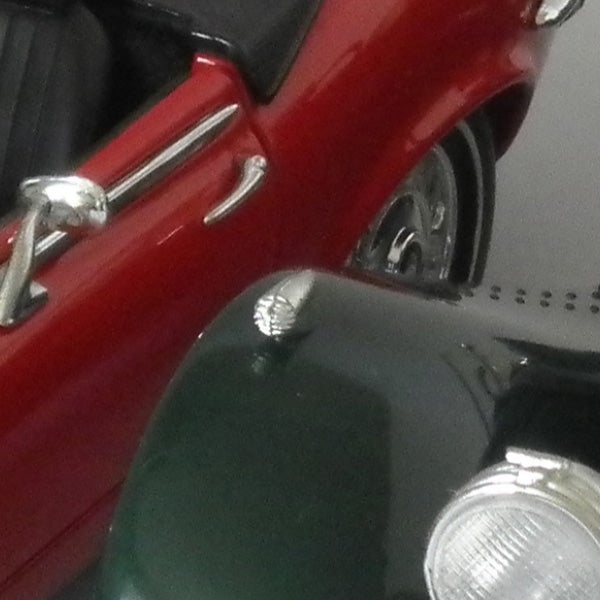
There’s some loss of detail at 200 ISO, but no noise problems.
—-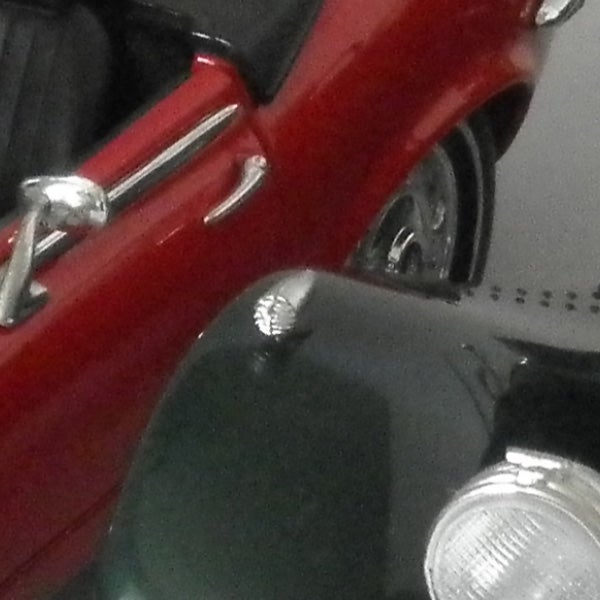
Noise reduction kicks in at 400 ISO, blurring out a lot of detail.
—-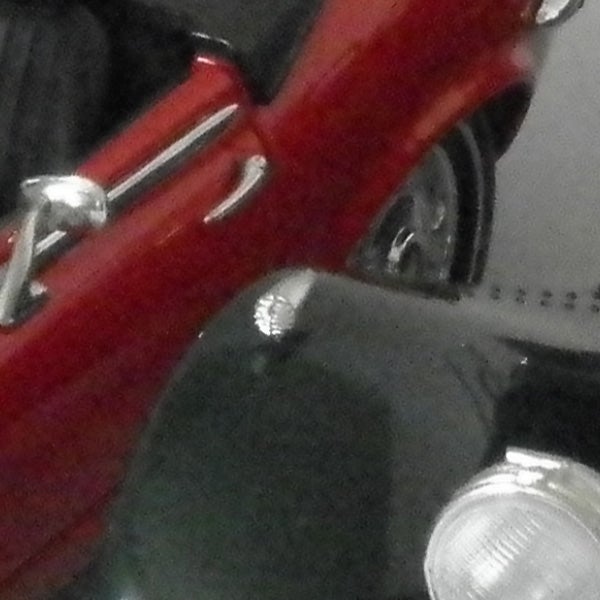
Image quality is greatly reduced at 800 ISO.
—-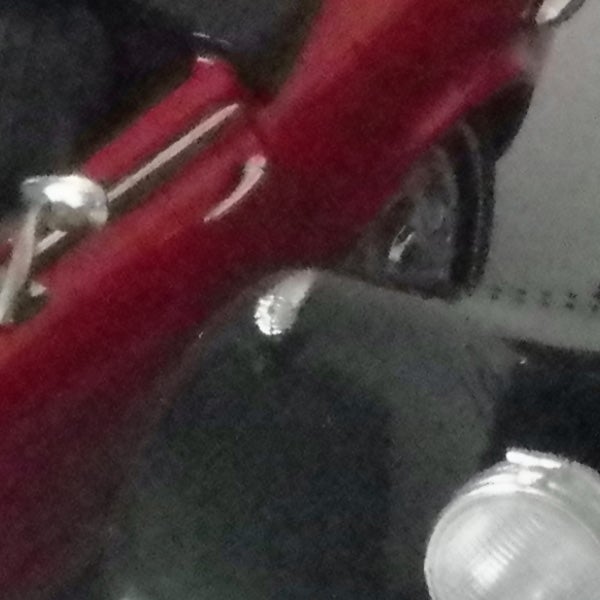
As usual, 1600 ISO is best avoided.
—-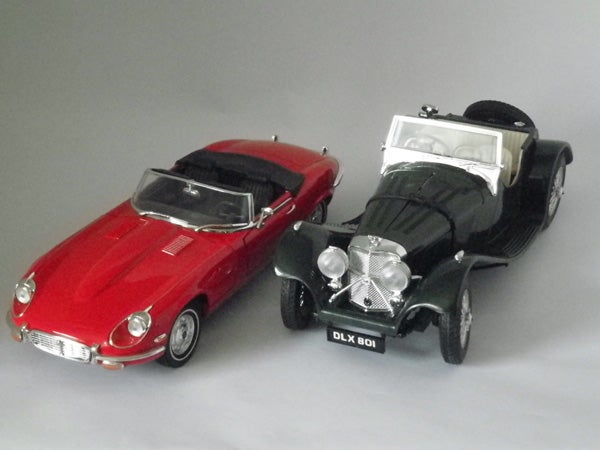
This is the full frame at maximum ISO.
—-
‘A range of general test shots are shown over the next two pages. In some cases, the full size image has been reduced for bandwidth purposes, and a crop taken from the original full resolution image has been placed below it to show the overall image quality. Some other pictures may be clicked to view the original full-size image. ”
—-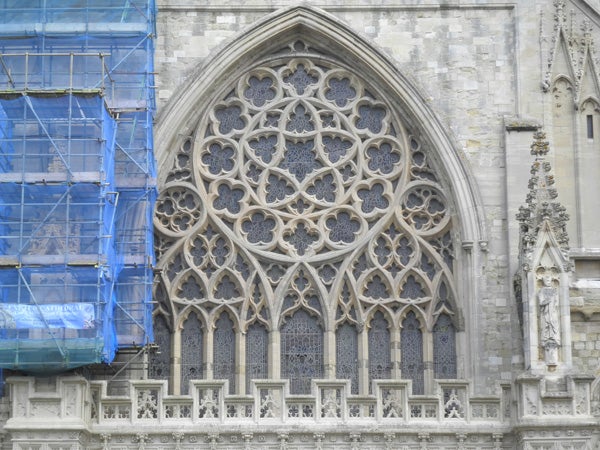
Here’s the usual detail test shot of the West Window of Exeter Cathedral, for you to compare with other cameras. See below for a full res crop, or click to see the whole picture. File size 6.1MB.
—-
The level of detail is very good for a budget camera, and the large file size of over 6MB saves most of it.
—-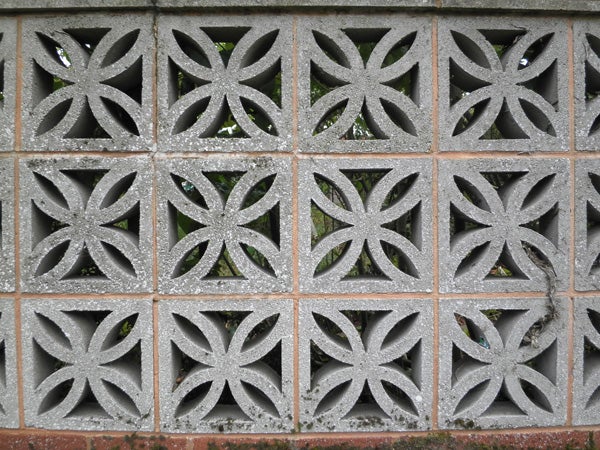
The lens does produce some barrel distortion at wide angle, but it’s not too severe.
—-
Centre sharpness is very good.
—-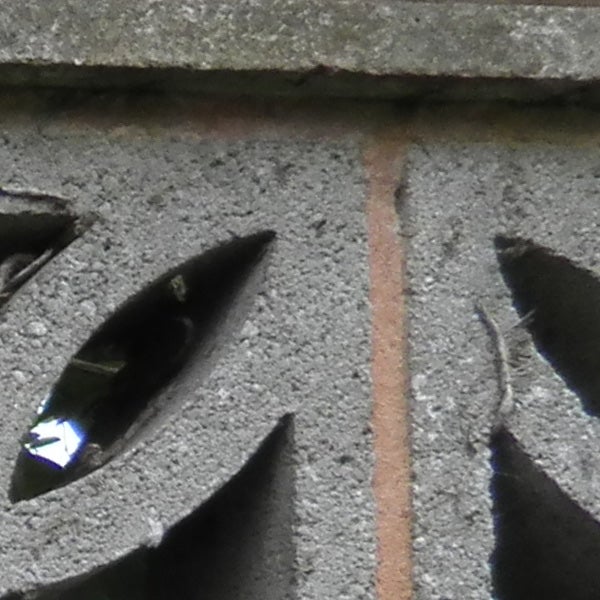
Corner sharpness is also good, with less chromatic aberration than on previous FE models.
—-
”Here are some general test shots to help evaluate the camera’s overall image quality, including dynamic range, colour rendition and the zoom range of the lens. Some pictures may be clicked to download the full size original image. ”
—-
The wide angle is equivalent to 26mm.
—-
The telephoto end is equivalent to 130mm.
—-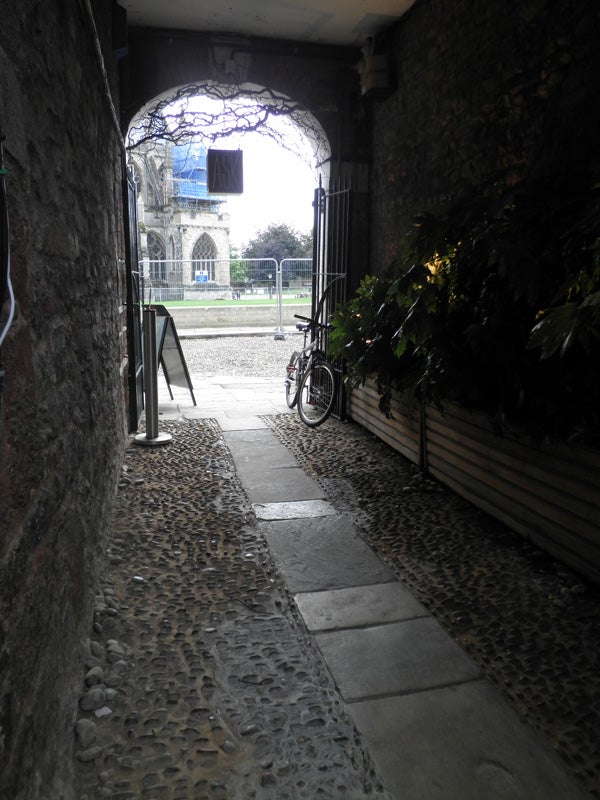
The small sensor limits dynamic range in high-contrast situations.
—-
Colour rendition is a little muted, but detail is very clear.
—-
Trusted Score
Score in detail
-
Value 8
-
Design & Features 7
-
Image Quality 7
-
Build Quality 8
Features
| Camera type | Ultra Compact |
| Megapixels (Megapixel) | 14 Megapixel |
| Optical Zoom (Times) | 5x |
| Image Sensor | 1/2.3-inch CCD |
| Optical focal length | 4.7 - 23.5mm in 35mm film terms |
| Shutter speed | 4secs - 1/2000 |
| Auto focus | TTL iESP auto focus with contrast detection |
| Manual focus | No |
| Max output resolution | 4288x3216 |
| Other resolutions | 3264x2448, 2560x1920, 2048x1536, 1600x1200, 1280x960, 640x480. 1920x1080 |
| Focus range | 0.6m to infinity (wide), 1.0m to infinity (tele), 15cm macro |
| Exposure control | Program auto, iAuto, 13 scene programs |
| Exposure metering | ESP light metering |
| Exposure compensation | +/- 2EV/ 1/3 steps |
| Image Stabilisation | Digital |
| ISO settings | Auto, 64-1600 |
| LCD Monitor | 2.7-inch, 230k |
| Viewfinder | No |
| Flash range | Wide: 0.15 to 4.8m, Tele: 0.6 to 2.1m (ISO 800) |
| Flash modes | Auto, Red-eye reduction, Fill-in, Off |
| White balance modes | Overcast, Sunlight, Tungsten, Fluorescent 1,2,3, Auto |
| Drive modes | Single-shot only |
| Image formats | JPEG, AVI, Motion JPEG |
| Picture adjustments | Digital filter effects |
| Video (max res/format) | 640x480, 30fps |
| Movie length | Max file size 2GB |
| Self timer | 2/12 secs |
| Memory card slot | SD/SDHC |
| Supplied memory | 92MB |
| Batteries supplied | 74mAh Li-ion rechargeable |
| Charger supplied | Yes |
| A/V output | PAL, NTSC |
| Charging/Computer Connection | USB 2.0 |
| AV Out | Yes |
| Manual | Basic printed guide, 6 pages in English, full manual on CD |
Physical Specifications
| Dimensions Width (Millimeter) | 92mm |
| Depth (Millimeter) | 55mm |
| Weight (body only) (Kilogram) | 114g including memory card and batterieskg |

